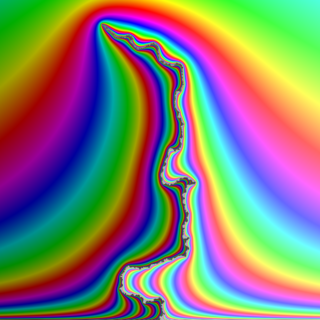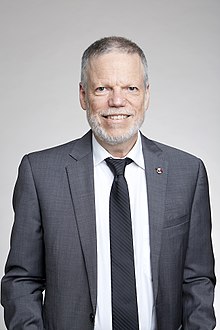
In statistical physics and mathematics, percolation theory describes the behavior of a network when nodes or links are added. This is a geometric type of phase transition, since at a critical fraction of addition the network of small, disconnected clusters merge into significantly larger connected, so-called spanning clusters. The applications of percolation theory to materials science and in many other disciplines are discussed here and in the articles Network theory and Percolation.

In physics, chemistry, and materials science, percolation refers to the movement and filtering of fluids through porous materials. It is described by Darcy's law. Broader applications have since been developed that cover connectivity of many systems modeled as lattices or graphs, analogous to connectivity of lattice components in the filtration problem that modulates capacity for percolation.

Béla Bollobás FRS is a Hungarian-born British mathematician who has worked in various areas of mathematics, including functional analysis, combinatorics, graph theory, and percolation. He was strongly influenced by Paul Erdős since the age of 14.

In probability theory, the Schramm–Loewner evolution with parameter κ, also known as stochastic Loewner evolution (SLEκ), is a family of random planar curves that have been proven to be the scaling limit of a variety of two-dimensional lattice models in statistical mechanics. Given a parameter κ and a domain in the complex plane U, it gives a family of random curves in U, with κ controlling how much the curve turns. There are two main variants of SLE, chordal SLE which gives a family of random curves from two fixed boundary points, and radial SLE, which gives a family of random curves from a fixed boundary point to a fixed interior point. These curves are defined to satisfy conformal invariance and a domain Markov property.

Oded Schramm was an Israeli-American mathematician known for the invention of the Schramm–Loewner evolution (SLE) and for working at the intersection of conformal field theory and probability theory.

In mathematics, a self-avoiding walk (SAW) is a sequence of moves on a lattice that does not visit the same point more than once. This is a special case of the graph theoretical notion of a path. A self-avoiding polygon (SAP) is a closed self-avoiding walk on a lattice. Very little is known rigorously about the self-avoiding walk from a mathematical perspective, although physicists have provided numerous conjectures that are believed to be true and are strongly supported by numerical simulations.

Harry Kesten was a German-born Dutch-Jewish American mathematician best known for his work in probability, most notably on random walks on groups and graphs, random matrices, branching processes, and percolation theory.

Michael Aizenman is an American-Israeli mathematician and a physicist at Princeton University, working in the fields of mathematical physics, statistical mechanics, functional analysis and probability theory.

The University of Toronto Department of Mathematics is an academic department within the Faculty of Arts and Science at the University of Toronto. It is located at the university's main campus at the Bahen Centre for Information Technology.
Bálint Virág is a Hungarian mathematician working in Canada, known for his work in probability theory, particularly determinantal processes, random matrix theory, and random walks and other probabilistic questions on groups. He received his Ph.D. from U.C. Berkeley in 2000, under the direction of Yuval Peres, and was a post-doc at MIT. Since 2003 he has been a Canada research chair at the University of Toronto.

Kai Behrend is a German mathematician. He is a professor at the University of British Columbia in Vancouver, British Columbia, Canada.
Thomas C. Spencer is an American mathematical physicist, known in particular for important contributions to constructive quantum field theory, statistical mechanics, and spectral theory of random operators. He is an emeritus faculty member at the Institute for Advanced Study.

Daniel T. Wise is an American mathematician who specializes in geometric group theory and 3-manifolds. He is a professor of mathematics at McGill University.
Joel Shalom Feldman is a Canadian mathematical physicist and mathematician.

Hugo Duminil-Copin is a French mathematician specializing in probability theory. He was awarded the Fields Medal in 2022.
David Chandos Brydges is a mathematical physicist.

Roland Speicher is a German mathematician, known for his work on free probability theory. He is a professor at the Saarland University.

The Department of Mathematics and Statistics is an academic department at McGill University. It is located in Burnside Hall at McGill's downtown campus in Montreal.
Vladas Sidoravicius was a Lithuanian-Brazilian mathematician, specializing in probability theory.
József Balogh is a Hungarian-American mathematician, specializing in graph theory and combinatorics.














